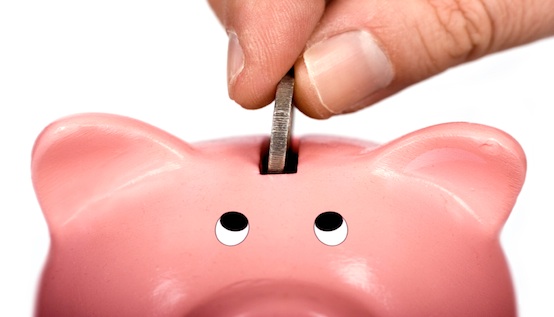Pay Yourself First If You Really Want to Save Money

You may or may not have heard this phrase before: “Pay yourself first.”
Many people often times say they will save whatever money is left over at the end of each month. Basically they are agreeing to pay themselves what’s left. As you might figure out, the flaw with the idea of setting aside whatever is left at the end of the month is that there is a strong temptation to spend on “must have” things. By the end of the month, there is no money left to save in most cases!
Make Saving a Priority
Instead of consigning money for savings to what’s left over at the end of the month, it is more logical to make saving the priority. You can put money in a savings account to cushion your emergency fund, or you may put it in your retirement account. Either way, setting money aside should be the very first thing you do each month.
Saving money for your future is more important than going out for dinner every week or buying a new pair of shoes. Think about what you want to be able to accomplish in the future. None of it will happen if you don’t set aside money now. Take an honest look at your finances and budget and make changes so that your goal on savings comes before you spend money on fun, yet unnecessary things.
How to Set Aside Money to Save

One of the best ways to save money is to do so the moment you get your pay check. The usual guideline is to put aside 10% of what you make, but any amount that you can comfortably do is better than not saving at all. Put that money into savings right away, before you have the chance to spend it.
Put that money in a place that requires time and effort to access so that you are discouraged from turning to the money for every small “emergency.” Keep that money out of reach and you will have to take a step back and evaluate the situation before you pull it out again.
It is usually possible to have an employer deduct money directly from your pay check and put it into Canada Savings Bonds. This way, you know the money is safe and it will grow at a rate that beats a traditional savings account. It is also a little more difficult to access that money.
Another long term idea would be to set up a Tangerine account or a TD e-Series Fund account and have an automatic withdrawal a few days after your pay date. It isn’t your employer sending the money to your account, but an automatic withdrawal means that you don’t have to remember to make the transfer each pay period. It is done on your behalf.
You may also choose to have money automatically transferred into your TFSA or RRSP. This way, you get a tax advantage that allows your money grow over time. You will save more if you use the tools the government offers to encourage saving.
Increasing Your Savings

It is never a good idea to just save the bare minimum. When you’re first starting out, you might not be able to afford a 10% contribution to your savings strategy. However, as you start earning more and as your financial situation improves, you should be able to save more over time. Make it a goal to increase your savings with each raise you get.
Not only will you be able to save more over time, but you will also avoid lifestyle inflation if you save a large portion of each raise immediately. Lifestyle inflation may result in more consumption and spending, and can cause financial problems in your future because the increased spending hinders you from saving as much as you need for financial freedom later on.
Follow these simple guidelines and you will find that your accounts can grow quickly and you won’t miss the money. Once you get accustomed to living on the remaining cash flow, you can speed up your savings rate by saving the future raises you will get at work. Expand to chosen investments, and you can boost your returns and build a cushion or emergency fund that can handle any new goals or needs.






